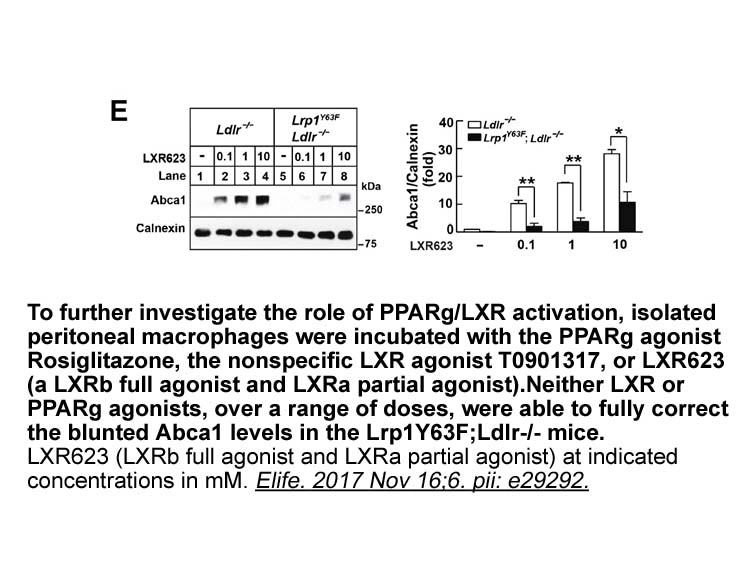Archives
indy 6 Thus the exact mechanisms responsible for progestogen
Thus, the exact mechanisms responsible for progestogen-induced changes in immune response are not known but the effects are believed to be exerted through receptor-mediated interactions. Since the mPR α is known to be a G protein-coupled receptor in fish, downstream signaling cascades via secondary messengers such as cyclic adenosine monophosphates (cAMP) can be considered. Recently, we have already been able to show that intracellular increases of cAMP lead to downregulation of NO production in stimulated carp leukocytes (Pietsch et al., 2008) offering a mechanistic explanation for the observed immunosuppressive effects of progestogens due to G protein signaling.
Acknowledgements
The authors like to thank Günter Kotterba (Friedrich-Löffler-Institute, Institute of Infectology, Greifswald — Insel Riems, Germany) for providing the Aeromonas hydrophila strain Uni38. Furthermore we are grateful to Eric Eckmann for maintaining the fish and additionally help in the laboratory work.
Introduction
After menopause, many women suffer from postmenopausal symptoms associated with the decline of endogenous estrogens levels due to the cessation of ovary activity. Postmenopausal hormone therapy (HT) has been introduced in the 50′ for correcting climacteric symptoms, vaginal dryness and depression. Initially, HT exclusively consisted of an estrogenic indy 6 and in 70′, progestogens were added to estrogens to reduce the increased risk of endometrial hyperplasia and cancer associated
the cessation of ovary activity. Postmenopausal hormone therapy (HT) has been introduced in the 50′ for correcting climacteric symptoms, vaginal dryness and depression. Initially, HT exclusively consisted of an estrogenic indy 6 and in 70′, progestogens were added to estrogens to reduce the increased risk of endometrial hyperplasia and cancer associated  with estrogens therapy (ET) [1]. Currently, women may be prescribed several molecules including natural progesterone and synthetic compounds which have very different pharmacological effects.
Venous thromboembolism (VTE), either deep vein thrombosis or pulmonary embolism, is a main harmful effect of HT among postmenopausal women [2], [3], [4]. For about 10 years, epidemiological data have shown a differential association of oral and transdermal estrogens with the VTE risk among postmenopausal women [5], [6], [7], [8]. Indeed, oral estrogens increase the VTE risk while transdermal estrogens appear to be safe with respect to thrombotic risk [4], [9]. More recently, the type of progestogens has also emerged as another important determinant of the thrombotic risk among HT users [6], [7], [9], [10], [11].
with estrogens therapy (ET) [1]. Currently, women may be prescribed several molecules including natural progesterone and synthetic compounds which have very different pharmacological effects.
Venous thromboembolism (VTE), either deep vein thrombosis or pulmonary embolism, is a main harmful effect of HT among postmenopausal women [2], [3], [4]. For about 10 years, epidemiological data have shown a differential association of oral and transdermal estrogens with the VTE risk among postmenopausal women [5], [6], [7], [8]. Indeed, oral estrogens increase the VTE risk while transdermal estrogens appear to be safe with respect to thrombotic risk [4], [9]. More recently, the type of progestogens has also emerged as another important determinant of the thrombotic risk among HT users [6], [7], [9], [10], [11].
Different pharmacological classes of progestogens
Progestogens include both progesterone, the physiological molecule synthesized and secreted by ovary, and synthetic compounds named progestins which derived from either progesterone (pregnanes and 19-norpregnanes) or testosterone (19-nortestosterone) [1]. Pregnanes derivatives consist of several molecules including dydrogesterone, medrogestone, chlormadinone acetate, cyproterone acetate and medroxyprogesterone acetate (MPA). Norpregnane derivatives include nomegestrol acetate, promegestone, trimegestone and nestorone. Finally, nortestosterone derivatives consist of ethinylated derivatives, non ethinylated derivatives, spironolactone derivatives and tibolone. Nortestosterone ethinylated derivatives are composed of estranes, including especially norethisterone acetate (NETA) and of gonanes which are preferentially used in contraceptive pills [1]. Nortestosterone non ethinylated derivative is dienogest and the spironolactone derivative is drospirenone. In European countries and especially in France, women are prescribed a wide variety of progestogens while MPA and some specific testosterone derivatives are the almost exclusive progestogens used in Anglo-Saxon countries [12].
Progestins have different pharmacological properties depending upon the parent molecules which they are derived and the metabolites they product (especially for nortestosterone derivatives). In addition, changes in progestogen effect occur according to the administered daily dose. Very small structural changes may induce considerable differences in the progestin activity (Table 1). The effects of progestins are related to interactions with the progesterone receptors but also with other steroid hormone receptors such as estrogens receptors, androgens receptors, glucocorticoid and mineralocorticoid receptors [13], [14]. These interactions may either induce or prevent the transactivation of steroid receptors. Therefore, the balance between the receptor coactivators and corepressors recruited by a progestin determines whether the overall effect of a molecule will be agonistic or antagonistic for each hormonal effect [15]. For example, some of progestins have a high antiandronegic activity and others possess progestogenic effect with antiestrogenic actions.